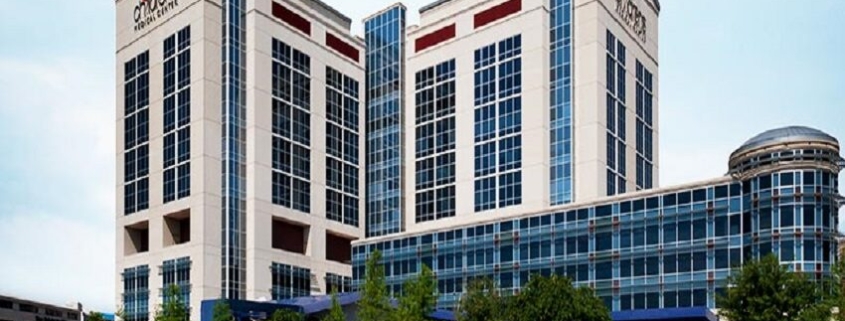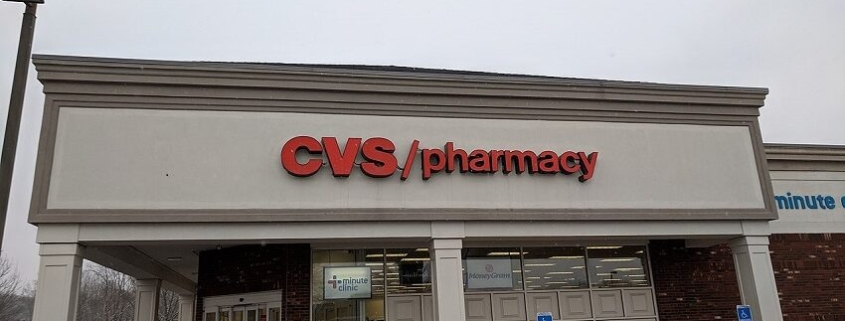People travel here for all kinds of reasons: to cheer on the Dallas Cowboys, to shop at Neiman Marcus — and to get some of the best health care anywhere.
Antonio Dobos, a 4-year-old with a rare deadly brain disease, made the trek with his parents from a small village in Romania. He received a gene therapy treatment in a clinical trial at the University of Texas Southwestern Medical Center and Children’s Health, and his gait has already improved since he arrived in Dallas in late July.
“He’s walking normally and he’s very much a normal child, except he’s not talking yet,” his parents said through an interpreter.
Antonio’s case is an example of the amazing medical advances being made in Dallas. In the past year, such efforts have attracted over 8,000 people from outside the state to UT Southwestern alone. Other North Texas providers have become medical destinations, too, especially in cancer care and heart surgery.
These medical visitors speak to the quality and capacity of a booming local industry — one that’s invested billions in new facilities, services, research and personnel.
“A lot of people think you have to go to New York or Houston or San Francisco to get the best care, but we have some of the very best treatment right here,” said Stephen Love, CEO of the Dallas-Fort Worth Hospital Council, an advocate for the industry. “We save a lot of lives.”
The best are getting better. Five years ago, UT Southwestern had two specialties ranked in the top 50 nationwide, according to U.S. News & World Report. In the most recent ranking, UTSW had eight specialties in the top 25,, including those attracting the most medical tourists: neurology, cancer, cardiology and urology.
Clements University Hospital also has ranked as D-FW’s top hospital for five consecutive years. Clements was completed in late 2014 — 12 stories, 1.3 million square feet with a price tag of $800 million. It’s among several signature projects transforming the UT Southwestern campus and larger medical district, about 4 miles northwest of downtown Dallas.
Less than a year ago, UT Southwestern added a 12-story third tower that houses the clinical home of the O’Donnell Brain Institute. It just broke ground on a $120 million biomedical engineering research center, a collaboration with UT-Dallas.
Nearby, Children’s Medical Center Dallas has been working on a $56 million renovation of the emergency department at one of the busiest pediatric ERs in the country. It will have 26 new exam rooms, including four for behavioral health, and is projected to be finished by mid-2022.
Perhaps the most striking addition is Parkland Health and Hospital System, a modern 17-story facility that opened in 2015 and doubled the size of the old Parkland. The 2.8 million-square-foot campus included major upgrades in multiple areas and cost $1.3 billion.
Throughout the region, providers have invested heavily in hospitals, clinics, urgent care centers and medical offices, trying to keep up with a growing population. Since 2011, Dallas-Fort Worth has added 23.5 million square feet of health space, more than any Sun Belt metro, according to Transwestern, a real estate services company. The cost of those investments topped $10 billion, Transwestern estimated, and demand is expected to keep rising as more residents get older.
‘What Academic Medical Centers Were Built To Do’
The Antonio Dobos case draws on many strengths at UT Southwestern: from basic research in genetics to developing a viral transmission method to push genes into the brain to surpassing the regulatory hurdles for a clinical trial.
“At its most basic level, we’re offering hope to families who have children affected by this rare, universally fatal condition,” said Dr. Benjamin Greenberg, a professor of neurology and pediatrics at UTSW. “It’s what academic medical centers were built to do — to improve the practice of medicine year over year.”
Antonio is the second child to get this particular therapy, designed to treat a disease known as CLN7. UT Southwestern scientists are inserting healthy genes missing or mutated from patients’ DNA, and at this early stage, the focus is on patient safety. Antonio and his parents, Crina and Anton, have remained in Dallas since the boy got a single dose of genes in August. They’ll return to Romania on Nov. 30 and come back in February for more tests.
The parents’ advice to others facing a health crisis? “Just trust God and have faith,” they said through an interpreter. “It is very hard to go through all of this.”
A dose of healthy replacement genes is prepared for delivery into a child with a rare deadly brain disease. By inserting healthy genes missing or mutated from patients’ DNA, UT Southwestern scientists are looking to develop treatments for children with rare genetic conditions.
“It’s encouraging to hear Mom and Dad talk about Antonio walking normally,” Greenberg said. “But it’s too soon to conclude the therapy has succeeded — or even affected his gait.”
UT Southwestern is testing the highest dose of this type of therapy given to a human with a brain-based disease, and it’s using an aggressive regimen to prevent rejection by the immune system. Is the therapy safe? Are kids handling the high dosage of medicine? So far, doctors have not seen adverse effects, but the trial has two parts — lasting two years and then five more years.
“We don’t want to inappropriately declare victory early on,” Greenberg said.
To pull off this work requires great collaboration, he said, starting with UTSW and Children’s Health investing heavily in building a gene therapies program. The efforts also boost the reputation of UTSW and its O’Donnell Brain Institute, and that helps in recruiting more medical investigators.
“It really allows us to stand out on the national stage,” Greenberg said.
The quality of health care in Dallas, along with the region’s strong economy, have attracted many doctors, too. Since 2013, Dallas County added over 1,200 physicians in active patient care, an increase of 21%, according to Merritt Hawkins, a unit of Dallas-based AMN Healthcare. Like most places, Dallas has a doctor shortage, but it has more doctors per capita than the state and the U.S.
And wait times for a new patient to see a specialist in Dallas are shorter than in other metros, according to a Merritt Hawkins 2017 survey.
“There’s plenty of health care available here — no question,” said Marianne Fazen, executive director of the Dallas-Fort Worth Business Group on Health, which works with local companies to reduce health costs. “But we’re one of the most expensive markets in the country. That’s a real problem.”
She’s also bothered by a decline in hospital safety. In a recent report by the Leapfrog Group, about 30% of D-FW hospitals received an “A” grade for safety. While that ranked in the middle among some major metros, 51% of North Texas hospitals earned “A’s” just three years ago.
“They’ve clearly shown they can do it,’” said Erica Mobley, Leapfrog’s vice president of administration. “But if safety isn’t top of mind, something can slip.”
‘A Great City Has To Have A Great Public Hospital’
One of the most impressive things about Parkland’s new hospital was the local support that made it happen. In 2008, 82% of voters approved a $747 million bond election, and donors stepped up to contribute $150 million.
“A great city has to have a great public hospital,” Nancy Strauss Halbreich, co-chair of the fundraising committee, said at the time.
“Parkland’s new emergency department is five times larger and is the nation’s busiest ER, treating almost 205,000 people last year,” a spokesman said.
Parkland was the first Level I Trauma Center in Texas. The new Parkland has more space for pregnant moms, along with a lactation clinic and more infant services. Parkland, which has been called “The Baby Factory,” delivered over 12,000 babies last year, and nearly 1,400 were discharged from its Level III Neonatal ICU.
Ninety-seven percent of women delivering there received prenatal care, in part because of Parkland’s efforts to reach underserved communities.
“Industry leaders know they must look beyond their core business to lift the region,” said Barclay Berdan, longtime CEO of Texas Health Resources. “We’ve come to realize we don’t really improve the health of communities simply by operating hospitals. We’ve recognized the need to think differently about how we pursue our missions.”
That includes addressing a growing need for doctors. North Texas has critical shortages of many specialties, including cardiologists, pediatricians and psychiatrists, according to a state report.
In recent years, the region’s three largest hospital systems pledged to fund hundreds of new residency slots, the capstone to doctors’ training. Having more residents improves patient care and greatly increases the odds of those physicians remaining in the state. It’s an expensive proposition, and hospitals often must shoulder much of the financial burden of expansion. The cost of training a resident is about $150,000 a year, and the state provided just under $12,000 to offset that, according to a legislative report.
‘It Makes All Our Physicians Better’
Texas Health, which had 40 residency slots at its Presbyterian hospital in Dallas for decades, is growing to 70 slots by next summer and 130 residents by July 2024. Those include new programs in general surgery and internal medicine. Texas Health said it will spend $50 million on the residencies over the next four years.
In 2018, Medical City Healthcare launched a training consortium that’s grown to 220 residents and fellows in 13 programs. Young doctors work at 10 local Medical City hospitals, including in Dallas, Plano and Frisco. The company plans to expand to over 400 residents in the next three years.
Baylor Scott & White Health is adding hundreds of residencies in Dallas andFort Worth, in addition to moving 200 slots from Temple to its flagship hospital in Dallas. It’s also teaming with Baylor College of Medicine to createa new medical school in Temple, which will eventually train 160 doctors a year.
“We can’t address the needs of Texans without a well-educated, energized workforce, and a big part of that is training them,” said Pete McCanna, president of Baylor Scott & White.
The system has a large research institute in Dallas that employs 600, including scientists and research nurses. Investing in research and medical training has an add-on benefit:
“We believe it makes all our physicians better,” McCanna said.
Baylor is especially proud of its cardiac surgery program.
“The Heart Hospital in Plano has regularly received three-star ratings from the Society of Thoracic Surgeons and has the fourth-highest volume in the country,” a spokeswoman said. “It performed 1,780 heart surgeries in fiscal 2021 — 58% more than a decade earlier.”
Baylor operates one of the largest cancer centers in the region with an outpatient facility and cancer hospital on the Baylor University Medical Center campus near downtown Dallas. The research and treatment hub has become a destination for patients seeking immune therapy and clinical trials. It’s valuable to be recognized nationally and draw patients from outside the area.
“But it’s important to strike the right balance,” Baylor said.
“We’re not here only for the brand,” said Dr. Alejandro “Alex” Arroliga, Baylor’s chief medical officer. “We’re here to serve our community — and community care is local.”
Source: The Dallas Morning News




